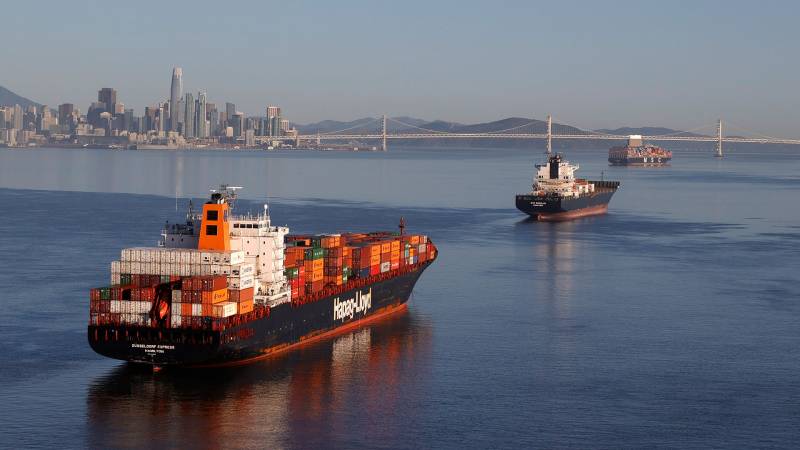Many of us have come to appreciate the beauty of the Bay Area even more during the COVID-19 pandemic. We’re outside, we’re walking more, and we’re noticing things we maybe didn’t have time to note before. Of course, all eyes are on the bay itself, which has led to some questions about the vessels floating there.
Bay Curious listener Christian Garvin lives in San Francisco, but works in San Leandro. He crosses the Bay Bridge every day, so he’s got time to take in the sweeping views. Recently, that view has been a little … cluttered.
“As I sit in traffic, I look over to my left and think: That’s a lot of cargo ships just sitting there,” Christian said. “As a business person, it makes me wonder, how is that efficient? What’s going on?”
Christian is right, there are more ships in the bay than usual. Under ideal circumstances, says Robert Bernardo, a spokesperson for the Port of Oakland, there would be zero ships anchored in the bay waiting to be unloaded. But in the last several weeks there have been as many as 13 ships. (If you’re curious about what each ship in the bay does, check out this Bay Curious breakdown.)
